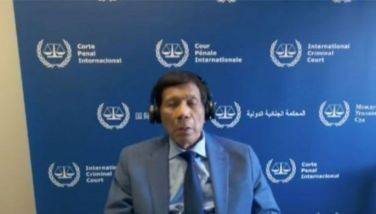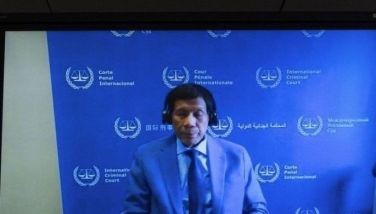Invest in the neighborhood: Building a community of shared future with neighboring countries
A few days ago, amid the gentle breezes and blossoming vitality of spring, I returned to Beijing to attend two important conferences: the Central Conference on Work Related to Neighboring Countries and the Conference for Chiefs of Overseas Missions of the Ministry of Foreign Affairs.
These conferences are of great importance for China to reflect on and refine its approach to strengthening relations with neighboring countries in the years ahead. I would like to take this opportunity to share some of the key messages from the discussions and their profound implications for the region and beyond.
The Central Conference on Work Related to Neighboring Countries, the first of its kind since the founding of the People’s Republic of China, marked a historic milestone. At the conference, President Xi Jinping systematically reviewed China’s achievements and accumulated experience in managing relations with neighboring countries in the new era. He delivered a comprehensive and scientific assessment of the regional landscape, clarified the goals, tasks, guiding principles and policy measures for neighborhood diplomacy in the coming period, and emphasized the importance of building a community of shared future with neighboring countries – while striving to open up new frontiers in neighborhood work.
At a time when the US-initiated tariff war continues to escalate across the globe, further undermining an already fragile world economy, China’s renewed commitment to the vision of a community with a shared future for mankind has become more relevant than ever. It offers a constructive and stabilizing strategy forward, helping the world steer away from turbulence and avoid a lose-lose predicament.
The conferences also underscored the strategic significance of China’s neighborhood. Given the country’s vast territory and extensive borders, its surrounding region plays a vital role across multiple dimensions. It serves as a pillar for national development and prosperity, a front line for safeguarding national security, a priority area in the conduct of overall diplomacy and a key link in advancing the vision of a community with a shared future for mankind.
At present, China’s overall relations with its neighboring countries have reached their best level in modern history. At the same time, they are entering a critical phase, as regional dynamics become increasingly intertwined with broader transformations in the global landscape.
Over the past decade, China has established diverse and substantive partnerships, cooperative frameworks and mutually beneficial strategic relationships with 28 neighboring countries and with ASEAN. It has also reached common understandings with 17 neighboring countries on jointly building a community with a shared future.
Belt and Road Initiative (BRI) cooperation agreements have been signed with 25 neighboring countries, and further synergy is being created through cooperation plans with both ASEAN and the Eurasian Economic Union. As the largest trading partner of 18 neighboring countries, China continues to deepen regional trade connectivity and economic integration.
Regional cooperation mechanisms – including East Asian Cooperation such as the China-ASEAN (10+1) Cooperation and the Lancang-Mekong Cooperation, China-Central Asia Cooperation and the Shanghai Cooperation Organization – have played a vital role in driving forward the process of regional economic integration.
China-ASEAN relations stand as a vivid illustration of China’s commitment to the principle of amity, sincerity, mutual benefit and inclusiveness in neighborhood diplomacy. They also embody China’s long-standing policy of fostering friendly and good-neighborly relations.
As President Xi Jinping has embarked on his first overseas trip of the year, China is poised to further deepen ties with Vietnam, Malaysia, Cambodia and ASEAN as a whole – injecting new impetus into the cause of peace and development across the region and beyond.
China’s neighborhood diplomacy has long been marked by consistency and stability, serving as an anchor of certainty amid an increasingly turbulent international landscape. The recent conferences emphasized the need to take into account both domestic and international imperatives and to strike a proper balance between the two top priorities of development and security.
To jointly create a brighter future with its neighbors, China will continue to uphold the vision of building a community with a shared future for mankind, and will advance cooperation in the following key areas:
• Act on the common vision of building a peaceful, secure, prosperous, beautiful and harmonious regional home.
• Foster an amicable, secure and prosperous neighborhood, guided by the principles of amity, sincerity, mutual benefit, inclusiveness and a shared future for humanity.
• Embrace Asian values – such as peace, cooperation, openness and inclusiveness – as the foundational guidance for regional engagement.
• Leverage high-quality Belt and Road cooperation as the main platform for development-oriented collaboration.
• Promote a model of regional security characterized by shared responsibility, dialogue over confrontation, unity in diversity and mutual understanding – prioritizing consultation and peaceful coexistence.
As a member of the Asian family and a firm advocate for building a community of shared future with neighboring countries, China is committed to strengthening strategic mutual trust with its neighbors. China will continue to support them in pursuing stable and sustainable development, while properly managing differences and disputes through dialogue and mutual respect. China will also work to deepen development integration, enhance security and law enforcement cooperation and expand people-to-people exchanges and cultural understanding across the region.
* * *
Huang Xilian is the Chinese Ambassador
to the Philippines.
- Latest
- Trending





























